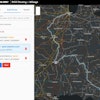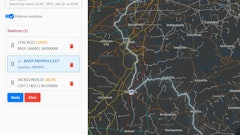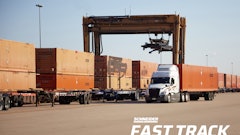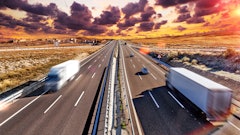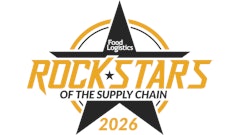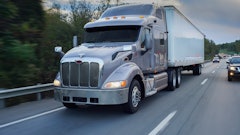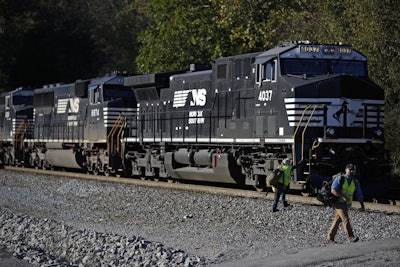
Rail transportation is an optimal solution to keep America’s food products moving. In a typical year, rail moves around 1.6 million carloads of grain and other farm products, and more than 1.7 million carloads of food products. In honor of National Food Day (Oct. 24), it’s a great opportunity to explore how rail can play a vital role in food logistics. Food transportation by rail allows for customization for diverse needs, consistent and reliable service, more sustainable shipping options and proactive steps for optimization, ensuring efficient and effective end-to-end supply chain logistics when delivering dry food and cold chain goods across the country.
Rail enables customization for diverse customer needs
One of the most unique features of shipping by rail is the wide range of customization available. When shipping food, temperature control is crucial. Some rail cars can be equipped with diverse refrigeration or heating systems to help ensure specific temperature ranges are sustained, making it a dependable option for shipping perishable and non-perishable food items.
The ability to transport different types of food products also requires a wide range of storage methods. When transporting by rail, customers have access to an array of specific train cars, perfect for food items of all sizes. Tank cars are available for moving liquids, hopper cars for bulk materials such as grains or seeds, box cars for packaged or palletized goods, and flat cars for oversized items. Larger rail cars are a great option for shipping commodities in bulk, which is more efficient when it comes to time and cost. While bulk shipping can be cost-effective, it is important to consider the weight of the goods. Rail transportation can address this issue effectively, as train cars are specifically designed to carry heavy loads, thereby reducing overall shipping costs per unit.
Rail is consistent and reliable
Timing is a critical variable to consider when transporting food. As rail systems operate on dedicated tracks, rail cars are far less susceptible to volatile congestion on roadways. These dedicated tracks allow railways to be the sole operator of their networks, meaning they can plan for specific train routes that work to mitigate any potential delays. The consistency and reliability benefits of rail are also effective when overcoming unforeseen events, such as extreme weather. Rail transport takes the phrase “rain, snow or shine” seriously, operating in a wide range of conditions, ensuring each commodity reaches its destination when other transportation modes may be halted.
Rail is a more sustainable option
Rail is the most sustainable mode of moving freight over land. It is significantly more efficient than road transportation, with railroads moving one ton of freight nearly 500 miles per gallon of fuel. This increased efficiency reduces fuel consumption and emissions, directly reducing the carbon footprint of transportation. Many railways also have individual sustainability plans to help make rail transport even greener and further reduce their carbon footprint. If more businesses move toward rail transportation, it could also help address the rapidly growing congestion problem that American roadways experience daily.
Rail transportation helps customers address issues proactively
Transporting goods by rail allows for proactive steps that can be taken to optimize food storage and cold chain logistics. Through Internet of Things (IoT) technology, customers can monitor their shipments in real-time and receive updates on temperature, humidity, and other critical conditions. Some rail cars are also equipped with damage tracking systems that can identify issues before items perish.
Rail systems are also working to anticipate problems before they occur. Implementing predictive technology in certain rail cars can ensure early detection of potential disruptions to the cold chain. As more data is gathered, advanced analytics are being used to optimize daily operations, routes, and more. While some of this work is manual, automated alert options can be installed to notify customers of events such as deviations from desired conditions, allowing them to make informed decisions on how to proceed.
While every customer will have different needs based on the products they ship, rail is a viable supply chain option for all types of businesses. Freight transportation by rail is customizable, consistent, and sustainable. Embracing rail transport is not just a strategic choice for today, but a forward-thinking solution for food and beverage logistics.

